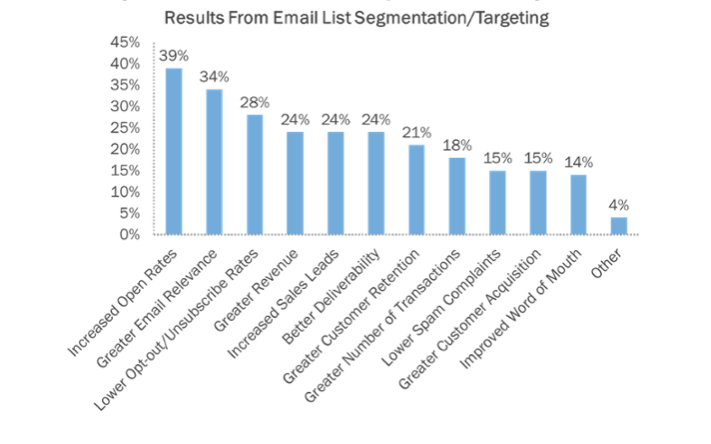More Difficulties for Businesses to Reach Followers on Instagram
Did you know that Instagram is about to change in a massive way? Instagram has announced that they will be ditching the traditional reverse chronological feed for new algorithm-based personalized feeds.
Posts will no longer appear in a chronological order and instead, followers will see posts based on what they are interested in and their relationship with the person posting, similar to what Facebook does.
This means that Instagram is likely to place videos and photos it thinks you will most want to see from people you are following on top of your feeds, disregarding the time those pictures and videos were posted. For instance, if your friend posted a photo of her new pet 8 hours ago while you were in a meeting, Instagram might make that photo the first thing you see when you open the app. This will be based on your history of interactions with the friend.
Announcing the changes on March 5th via its blog, Instagram said its growing popularity triggered the move. Most users miss on average 70% of their feeds, and this has made it harder for people to keep up with all the content people share on a minute-by-minute basis. This has meant that people keep seeing images they don't care about most of the time.
Speaking to the New York Times, Instagram co-founder, Kevin Systrom, said the new changes will ensure that the 30% of what you care is what is give priority. However, Systrom was quick to point out that the changes will not be abrupt. The Instagram community will wake up one morning and find a different Instagram. Instagram users should expect to see the changes in the coming months.
Not everyone is happy though
Marketing experts claim that these changes are a precursor to what they call Instagram’s content monetization strategy’. You know that Facebook owns Instagram, and this is exactly what Facebook did in 2009 before it began to monetize. In essence, they are trying to limit organic reach, and many brands fear they will have to pay for what was once free to get noticed.
Currently, a post to say 50,000 followers reaches 50,000 feeds. But with the new algorithm, things will be more difficult. That means the number of followers you have will be of little consequence; instead, what will be more important is the level of engagement your content generates.
As a result, more than 190,000 people have signed a change.org appeal to maintain the status quo. With many of those opposed to the new algorithm-based feeds being small business owners, they fear they will no longer be able to reach their followers. It is very unlikely that Instagram will reverse its decision. Similar opposition reactions of “Change Facebook back to normal!!” was witnessed when Facebook changed its algorithm. Twitter also recently faced similar resistance when it tried to move to algorithm based feeds.
Therefore, brands should start bracing themselves up for the new model instead of hoping that the proposed changes will flop. Apart from increasing their Instagram marketing budget, brands should find ways of creating a more engaging content. Simply put, customer acquisition via Instagram is about to get expensive.
With millennial changes such as Instagram personalized feeds, Mjrvisuals can help you increase your reach out of that content in your website through our expertise. We run the gambit of visual imagination including video production, digital marketing, video editing, print design, advertising, graphic design, graphic animation, motion graphic and media design. Be part of our portfolio of clients and let us tell your story to the world. Click here to visit our website: mjrvisuals.com/
Why You Need a Quality Business Website
It is no longer debatable whether you need a website for your business or not. In order to remain competitive and relevant to the modern way of doing business, you need to have a business website to promote your goods and services.
It is, therefore, not a question of whether you need a website or not, but the quality of website you need. This is an age where everything is online. In fact, when people want certain information, the first place they go to is the Internet. That means if you want to compete effectively you need to have a website that ranks high in the search engines.
It doesn't matter what type of business you do. It does not matter whether you are selling services or tangible goods. It doesn't matter where you are located. What matters is the fact that you are online and competing with other business; both small and big corporations. Whatever the case, business websites create a big difference if they are of quality types.
What is a Quality Website?
A quality website is a website that is not just appealing from its overall look, but one that also contains quality content. Actually, quality, SEO friendly and relevant content comes first in the rankings of the features of a good site. Search engines like Google have designed algorithms that have the capability to sift spam sites from quality sites; therefore, if your website has low quality content, then it will suffer greatly in search engine rankings. Remember visitors who come to your site are only interested in relevant, accurate, and updated information, and if they can't find that in your site, they will quickly navigate away to another website or blog which has the information they are looking for.
Avoid high bounce rates
There is nothing as bad as having high bounce rates from your website because it affects your search engine rankings, as well as denying you the opportunity to profit from the potential customer. If other webmasters find out that you have quality content, chances are that they will link to your site. This can be a big boost to your site performance because search engines greatly value inbound links (the number of links that link to your site). Simply put, content is the king.
What a business website can do for you
It is quiet unfortunate that there are still some people who underestimate the significance of creating a quality website for their businesses. Some of them think that websites are only meant for news agencies, sports, bloggers, and government agencies, among others. The truth is that so long as you own a brick and mortar shop, you also need to open your business to the global customer base in the form of a website. You can view the website as a virtual shop. One of the best blessings we have had in the 21st century is the Internet. Why? Because it offers a level playing field for everyone, whether you own a small business or you own a multinational company.
Remain Open 24/7
Being open 24/7 is something that is next to impossible with the traditional brick-and-mortal shop. Moreover, it enables you to sell to anyone, anywhere in the world so long as you can cater for shipping arrangement. In addition, having a website legitimates your business, thereby, boosting the confidence of your potential clients. In other words, it makes your look professional. Most importantly, it is the perfect and more convenient platform from which you can offer customer service to your customers.
It is also important to note that websites are no different from the traditional shop fronts. They also need to be marketed and advertised to attract the attention of potential customers. With millions of other websites competing for the attention of a customer, it is easy to fail to get noticed, and even if you get noticed, it is easy to be abandoned by the customer for the next site. Lest you forget, the next competitor is only a click away. Therefore, it calls for a serious marketing campaign, advertising, and search engine optimization strategies to make it. Simply creating a website and leaving it there isn't going to make any difference.
Let Mjrvisuals help you engage that content in your website through our expertise, we run the gambit of visual imagination including video production, digital marketing, video editing, print design, advertising, graphic design, graphic animation, motion graphic and media design. Be part of our portfolio of clients and let us tell your story to the world. Click here to visit our website: mjrvisuals.com/
How to increase YouTube traffic
YouTube is an incredible social media platform that marketers can use to advertise their companies. Now, there are almost 100 hours of videos that are uploaded every minute to the site, meaning that video marketing has become popular. However, the only problem is that the competition is stiff. That being said, it is simple for your animated video to get lost in the gigantic video galaxy in YouTube. But I got news for you: there are some pretty simple but effective organic traffic generation tips to keep in mind.
- Make good first impression
Most people do not know how important those video thumbnails can be. Thumbnails are the first thing people will see whenever they come across your video. So, never underestimate their power. In that regard, the thumbnail should be click worthy. YouTube will automatically create the thumbnail for you and give you three options. You need to include something catchier. Feel free to customize the thumbnail and upload. I recommend trying them out, all of them, one at a time to see which one will perform better.
- Mind your title and video description
Your title and video descriptions are important, very important. They can help in improving your search research results. The first term should be relevant. It is always suggested to include a keyword in your descriptions. The title should also be clear and precise. The video description is where you can tell the audience what the video is about and how it going to solve their problems.
- Background image
You can complement your video content by accompanying them with a clearly designed background image. Apart from color and theme options, YouTube helps users to upload their own background images to stand out from the crowd.
- Feature your best video
Not all videos are the same. Some videos will be more popular than others will. Therefore, you ought to use your best videos to attract traffic for the new or less popular ones. Sometimes it is better to select another video to occupy the space left by the featured video.
- Add tags
It is important to tag your videos with keywords so that you can bring the viewers to yourself. To find these settings options, go to your channel.
- Take care of the comments
Many people make lousy mistakes that cost them thousands of loyal viewers: they fail to respond to the comments left by viewers. Although this might not look important, it is a serious offence when it comes to attracting and retaining viewers. However, you should be wary of spam comments because they are equally toxic to your content.
- Be active
Recent activities shown on your channel help your customers to know that you are active. Video owners who have liked other channels are also more likely to drive more traffic to their sites.
- Create a playlist
Users like playlist and creating one will be a big boost to your channel. Especially if you have a series of videos that have a sequence, it saves your customers the headache of scavenging through the heap.
Ensuring that You Achieve Online Reputation Management
Prudent Online reputation management for your business is very vital for the growth of your business. Your reputation is everything when it comes to growing your business online.
Online reputation management refers to a set of approaches and techniques that are aimed at improving and increasing a particular company’s online reputation. If the online reputation management is handled well, it can make a company successful; otherwise, it can break a company’s chance of further progress and success if it is mismanaged. The thing is that you are not going to leave your brand, business, or personality to chance. Apart from the products, good reputation is what the business really has.
Why Reputation Management is Important
Online Reputation management is very important to individuals and business. Professional reputation is vital, and need to be maintained at all times in order to achieve better results in search engines. The products of good reputation include receiving favorable customer testimonials for your goods and services as well as having high market ratings, compared to your peers. Suppose that your company receives too many negative comments concerning the products you sell, what would be the repercussion? Of course there is no need to go into that, but there is only one thing you will be sure to face-stagnation or decline of your business performance. From the customer perspective, a company what people say about a company is a very significant means of making a purchase decision.
Business entities and individuals should approach their online reputation management from a proactive angle. In other words, they have to actively control how their brand, product and company’s image is painted to the outside world. It involves actively removing negativity by substituting it with positive feedbacks to ensure that the business achieves longevity.
How Can Companies and Individuals Effectively Manage their Online Reputation?
One of the most popular approaches to achieving good reputation is by hiring an online reputation expert, whose work will be to specialize in managing online reputation. This will also include repairing negativity and introducing measures that will ensure that the company’s online reputation is well taken care of. A good example is where you can find a dissatisfied customer or a rogue competitor generating several articles in forums and blogs discrediting your product or services. In such a case, it is the work of the online reputation expert to counter such claims through the most effective means. Figuratively speaking, a good online reputation management involves preventing fires of negativity from being lit, as well as putting off those fires if they have already been lit, through feedback.
Normally, online reputation experts would monitor social sites, forums and blogs to scavenge for any information go around about the company. Generation quality, informative and promotional content is one way of enhancing a reputation of a company. The company should also integrate its website to social sites like Facebook, Linkedln, twitter, and YouTube, among others. A great emphasis should be put on the positive customer testimonials, product reviews and feedback. However, this doesn’t mean that negative feedback from customers should be ignored.
Traditional methods of maintain a company’s reputation or brand can still be utilized. Such methods may include billboards, fliers, mass media, press releases, and promotional campaigns.
How to Increase Customer Engagement
How to Increase Customer Engagement
Customer engagement is one of the most important keys to running a successful business. Hence, you must create a strong and proper customer acquisition strategy in order to engage the customer. How do you improve your customer engagement?
The best way to improve customer engagement is by turning the business into a customer centered one. However, this can be a challenging undertaking and may take a little time to accomplish. But if you are patient, you can greatly improve on your customer engagement.
Here are 7 ways to increase customer engagement:
1. Put the customer at the center
Without the customer, your business cannot be. The customer is the most important person in your business. So placing the customer at the center of the business is the most logical thing to do. As you do so, you must ensure that you have a very clear focus on where, when and how you will interact with the customer.
2. Be honest with yourself when assessing your failures.
Things may go wrong, and often they will. However, if you are honest when it comes to assessing what is holding you back, you have a better chance of creating a better customer engagement or relationship. Then you need to make a strategy on how to tackle the problems. It is recommended that you start by setting achievable and quick goals before proceeding towards hard and long term goals.
3. Capture customer feedback
Customer feedback is an essential tool when you are in the process of creating great customer engagement. It ensures that you will learn customer behavior and get insights that will help you to fulfill your customer needs.
4. Understand value exchange
Understanding value exchange involves first understanding and then building the information exchange program. Identify which kind of information customers are normally happy to share and understand what your business and the customer can gain in exchange.
5. Take a broader picture
If you want to improve customer engagement, taking a broader picture is important instead of focusing on individual experiences. For instance, all areas in your company have a role to play when it comes to customer engagement and doesn’t apply to marketing or customer service alone; therefore, it is important that you focus on the whole picture.
6. It is not all about marketing
Marketing might be an important component of any successful business, but you have to go beyond marketing. You need to study various customer retention strategies. All successful businesses treat the customer as their most important person and design their strategies around retaining the customer. It involves everyone in the organization, not just those who interact directly with the customer.
7. Empowering business users
It is important to empower business users who keep you updated about your customer experiences instead of leaving all that responsibility to the IT department. You should align all the marketing, sales and customer service department around the customer. In order to achieve this, it is advisable that you develop a complete buy0in from the Chief Executive Officer including all the other executive team members of the organization.
6 Blogging Myths Debunked
6 Blogging Myths Debunked
On the subject of blogging and making money from blogging, there are tons of opinions out there, and many of them are myths that are not only floating around, but persistently being told. Now they seem like truth which in the real sense they aren’t. I wanted to debunk the 6a common blogging myths that have consistently caught my attention.
If any of these myths have been holding you back, now you have the opportunity to know the truth and do the right thing.
Myth #1: If You Build it They Will Come
No, that is not true. Setting up a blog and posting content is only a small part of what you need to do to attract people to your blog. There are many more things you need to do such as sharing on social media, commenting on other people’s blogs, guest posting and adopting a solid marketing strategy. There are millions of blogs being written every day. So if you just post and sit back, no one is going to notice your blog.
Myth #2: You Can’t Make Money Blogging
Although the majority of blogs that are online are personal blogs where the bloggers have no intentions of monetizing them, many more are making money. You may think that it is not possible to make money through blogging, but that is not the case. You may even have started one with the sole purpose of monetizing it but reached a dead end when you realized that your AdSense is not making you a single cent. Instead of giving up, you should find out why your blog is not making money and improve it. AdSense and Ad Sales are the most common ways of making money through blogging. Others are affiliate programs, sponsored content and selling own products.
Myth #3: A Simple Blog with Plain Background is Boring
Many people think that your blog has to be designed with fancy colors with many plugins. Have you heard people say blogs with white backgrounds are boring? I have heard it many times and I think this is the greatest lie of them all.
If you look at a blog like SeoHour, you will be surprised at its immense simplicity, yet hundreds of thousands of people visit his blog. The first time I visited the blog I was very impressed. Unlike other blogs where you feel overwhelmed with plugins, colors, gadgets and ads, I felt relaxed and easy. Perhaps you need to rethink your design. If your blog is overwhelming its readers with colors, gadgets and ads, you are most probably experiencing high bounce rates. Remember, readers come to your blog for information, not to see how fantastic your designer was.
The first think your reader should notice shouldn’t be your background or gadgets, but your headline and the body. Your design should focus on functionality, not aesthetics.
Myth #4: You Have to be a Great Writer to Blog
This is one of the commonest misconceptions about blogging. People think that only good writers should be bloggers. Writing blog posts doesn’t require exceptional writing skills like those required for formal journals. Blogging is all about sharing information in a conversational manner. I have seen bloggers with average writing skills running very successful blogs. A Good Example is ShoutMeLoud. The blogger doesn’t write in perfect English, yet he has an almost fanatical following. Likewise, I have seen many bloggers with perfect writing skills who have failed as bloggers. Of course you have to strive to write blogs with perfect English, but if English is not your first language then you just have to begin with what you have as you learn. I don’t subscribe to those who say that blog posts must be written in perfect grammar. So long as you write very useful content and format your posts properly, you will become successful as a blogger. However, I am not saying that you should be careless with your grammar. All I am saying is that you should do your best, but you don’t have to be perfect.
Myth #5: Readers Have a Very Short Attention Span so Short Content is Key
Running a successful blog involves publishing useful, evergreen content. Most of the content is in the region of 700-5,000. Most blog posts that have done very well are long, evergreen posts.
Myth #6: Blogging is for passive income
If you were to make any money blogging, you should blog consistently. Most bloggers who make money blogging are full time bloggers. If you think that blogging is something you are going to do for 2 hours a week and expect to reap big, you are wrong. There is considerable amount of time and effort you need to invest before you even begin seeing results.
Increase your email Open Rates using these strategies
Increase your email Open Rates using these strategies
Millions of emails hit inboxes every day. Many of those emails are either ignored or deleted straightaway without even opening them. That is why having a compelling email subject line is critical.
There is no point of having thousands and even tens of thousands in your email list when only handful of them actually open your emails. It does no good to you or to your business to have a mammoth email list, but microscopic open rate.
Getting your email to be opened and read in a crowded inbox is a big challenge, but a powerful subject line can make all the difference between being ignored and converting your leads.
Oh, subject lines. So challenging to write, yet so vital to the success of your email campaigns.Poor open rates is an issue that is confronting many internet marketers. There is both a science and an art to composing persuasive email subject lines that not only acts as baits for users to open your emails but to also take action once they open them.
In 2012, Epsilon’s fourth quarter email analysis showed that the average open rates was 27.4% and the average click through rate was 4.5%.
In other words, almost ¾ of people that you send emails don’t open them and when they open, only less than 5 in every 100 will bother to click any of the links.
That is a big problem for most internet marketers. This article explores powerful email newsletter subject lines strategies to win the email marketing war and tremendously increase your email’s open rates by as much as 203%.
This article is going to show you how to write irresistible email subject lines that get prospects to open the emails.
In a nutshell, here is what you are going to learn today:
- Calculating the Open Rate for Your E-Mail Marketing Campaign
- Best Practices for Email subject lines
- Case Studies: Best email subject lines for icreasing open rates
- How to time your emails to increase open rates
Calculating the Open Rate for Your E-Mail Marketing Campaign
If a five-year old came to you and asked, “What is email open rate?” what would you tell that kid?
Don’t scratch your head. Here is a simple graphic by Echogravity to explain it
Thus, email open rates measures the number of specific interactions with an email server after the e-mail is sent and it is expressed as a percentage of non-bounce rates. Your email is only counted as open when the recipient clicks a link in the email and enables the images in your email to display.
So email open rates is calculated by taking the number of emails opened and dividing it by the total non-bounced emails.
The good news is that you don’t need to scratch your head over this. All email marketing providers like Mail Chimp, Vertical Response, Benchmark Email etc provide email open rates metrics.
6-Steps to Improve Email Open Rates
You can improve your email open rates by following these six steps
Step 1: Be ultra-specific and useful—make sure the subject line is useful and relevant to your customer needs.
Step 2: Identify yourself: let them know who is sending the message
Step 3: be visually different: your subject line should standout visually. Use things like square brackets and don’t overcrowd the subject line.
Step 4: send timely emails: the timing is important. We’ll look at this in more details at the end of this article.
Step 5: Include a Call to Action *CTA*: ask questions to make your readers take action.
Step 6:Test your subject lines: Use A/B testing to test your emails to see which subject lines work best.
Best Practices for Email subject lines?
Now that you know what your email open rate is, it is time to improve it. According to Hubspot, having an open rate of lower than 15% should be a cause for alarm. Acquiring those emails isn’t easy, so you shouldn’t take open rates for granted.
According to MailChimp’s exhaustive recent study, using clever subject lines can tremendously increase your open rates. And beyond just a fancy subject line, you must offer an in-depth content for your subscribers to open through the links and even take action.
So the first step towards improving your email marketing is to learn how to write attention-grabbing email subject lines. This video by April Bowles-Olin will teach you how to write compelling email subject lines.
One of my favourite pieces of advice from April is when April urges marketers to send themselves a test email to see how the email compares to other emails in their inboxes and see whether they would click on that email. The idea is to be brutally honest with yourself so that you can wear the shoes of your subscribers.
Let us look at some of the best practices for good email subject lines that sell.
According to Mailchimp researchers, the best subject lines are unusually short, evocative, and descriptive and give recipients good reasons to open their emails. When writing best email subject lines, it is important to keep the audience in mind and to test the keywords and phrases so as to maximize subscriber engagement.
Tips for writing irresistible email Subject Lines
Enticing your audience to engage with your email is a struggle for many marketers and small business owners. Here are 5 tips to writing irresistible subject lines.
1. Cleverness vs. Clarity
In most cases, branding and marketing is about standing out, coming up with something catchy and being memorable. However, the email subject line is not the right place to practice this.
Your recipients don’t want unwanted surprises. They want to have a clear understanding of what to expect when they click on your message. So the subject line should have a worthwhile messages.
Look at the below examples.
Email A is not clear. The subject line doesn’t provide clarity and the message is ambiguous at first glance. Email B on the hand is short, precise and very clear.
AWeber Communications conducted a research in 2011 and discovered that an email subject line that is clear gets 541% more clicks than one that is ambiguous or one that is trying to be clever.
In other words, when it comes to email marketing, remember this simple statement: Clarity is GOOD; Cleverness is BAD
Just ensure the recipients clearly understand the content of the email by the subject line. That alone can great increase the number of customers who click your CTA.
People don’t actually want to try to figure out what you are trying to tell them. They simply do not have that time.
Here are examples of clever and clear email subject lines
Clever Subject Lines
- ABC Associates’ Always Awesome Amber Adams
- It’s finally here
- Look no further than your favourite site
- The early bird catches the worm
- Great gifts to stir you up
Clear Subject Lines
- 10 awesome gifts for her this valentine
- Increase your conversion rates by 200% using these strategies
- 5 ideas to improve your kitchen
- Why I paid $10,000 for my web design and how it has paid off
2. Use actionable language
One way to trigger action is to use actionable language. You don’t necessarily have to use verbs—though it certainly helps.
I received this email from edX. This is one way to use actionable language effectively.
Use actionable verbs like “download”, “take”, “enrol”, “Book”, “reserve”, “buy” etc.
However, you don’t have to rely on verbs to use actionable language. This give you more room to play with words. For example, “Don’t Miss This Season’s Thanksgiving Coupons.”
3. Personalize when possible
Email segmentation is the best strategy for personalizing your message. The following data from eMarketer shows the importance of email segmentation
You notice that highly segmented email and targeted subject lines have 39% higher open rates and lower unsubscribe rates. This in turn increases sales leads and greater customer retention.
Before sending that email, ask yourself the following questions:
· Who are the recipients?
· What are the likes and dislikes of the recipients?
· What excites my subscribers? What are their fears?
4. Embrace convention, be obvious
Emails need to be conventional. It may be boring but that is the only way to get people to open them. Every component of the email need to be clear to the recipient.
Ø Make your links obvious: creating, big, conspicuous and clickable (tappable) buttons is the way to go. Make them wide enough so that they can be tapped with a thumb for those on mobile devices. Ensure the texts are bold and links are in contrasting colors. Do not have too many links and let them be well spaced.
Ø Make the benefits of opening the email obvious: don’t bandy words. Go straight to the point. This brings us to the next point.
5. Align Your Subject Line Copy and Email Copy
It is crucial for your CTA and landing page to align. The same principle applies when crafting email subject lines and the message body. Readers should be able to read in the email message what the subject line promises. If there is a mismatch, you aren’t going to receive high click-through rates and at worst, most people will just unsubscribe.
6. Say less
Don’t write extra-long subject lines. Don’t write blocks of paragraphs. Be very specific and cut the extra wordings. Your email message and subject line should be scannable. Keep it short: 50 characters or less works best. In a study involving more than 200 emails, MailChimp found that email subject ines with 50 characters or less have higher clicks.
7. Don’t use urgency in every single email you send out
If every other email you send is urgent, then people eventually become used to your antics and you lose credibility. Say it is urgent only when it is truly urgent.
In any case, it is better to point out the importance of the message or offer rather than its urgency unless it is time-bound.
To wrap this section up, I found this interesting infographic by Unbounce and I think you should look at it.
Case studies: 10 Best Email Subject Lines that Increased Open Rates
Here are 101 best email subject lines that increase open rates by 203%. Study them and notice the patterns. Whether knowingly or unknowingly, they have all the elements we have discussed so far.
Timing is everything
The time you send your email also affects its open and click-though-rates. Know your audience and use A/B testing to find the right time to send email. The time aspect is the final piece in the 203% puzzle. If you get your time right, you can experience as much as 60% higher open rates.
When Nathan Williams sent emails within 24 hours to new signups, he experienced 60% open rates. Having said that, you can’t be absolutely sure what the best time to send emails should be.
So it is just a matter of experimentation and trial and error
Here are some resources to help you get started:
- KISSmetrics infographic on the best time to send emails
- According to Rick Stamberger, the best time to send emails is when your audience is most likely to be online. This depends on industry and geographical locations.
- According to Kevin Gao, founder of comm100, Mondays are not the best days to send emails, as well as weekends. So your best bet is Wednesday, Thursday and Friday.
Ultimately, you are going to have to test it.











